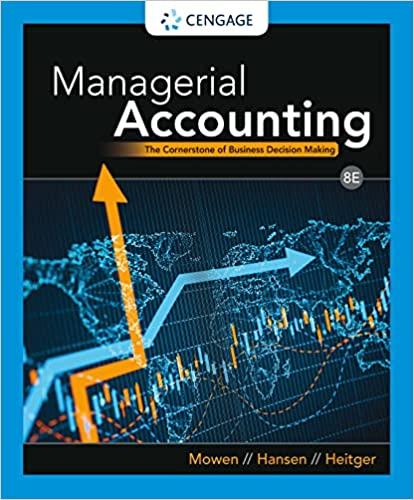Question
The accountant was very confused when she completed the income statement. Throughout the month, the three owners observed that the sales and production performance for
The accountant was very confused when she completed the income statement. Throughout the month, the three owners observed that the sales and production performance for the firm had been in line with their expectations. In addition, the selling price per component had been $20, which was the expected selling price. Yet, the income statement shows a significant net loss of $157,000 for the first month of operations. The company president's reaction to the financial results was even more negative after he had a chance to review the calculations. "This simply cannot reflect what happened," was his initial comment. "We were expecting a unit production cost for each component in the $12 to $13 range when we set our selling price of $20, which is compatible with the price charged by our main competitors. Now you are telling me that our unit cost must be significantly higher than that when we produced 40,000 units during July. What in the world is wrong? We cannot survive at this rate and we sure cannot raise our selling price. Let's look at these numbers again."
The accountant reconsidered the situation and discovered the following:
1. Inventories at the end of July:
Raw materials $22,000
Work in process$80,000
Finished goods?
2. The production operation uses 70% of the building and the selling and administrative functions occupy the other 30%. Utilities are used in the same ratio.
3. A production patent used by the firm has a royalty of $2 per component produced.
4. Rent on the plant equipment is $5,000 per month plus $0.5 per component produced.
Required:
A. How many components were sold during July?
B. How many components were in the ending finished goods inventory on July 31, 2019?
C. Prepare a corrected income statement for July and a supporting cost of goods manufactured statement. Determine the unit production cost for each of the 40,000 components produced to compute the cost of the ending finished goods inventory.
Step by Step Solution
There are 3 Steps involved in it
Step: 1

Get Instant Access to Expert-Tailored Solutions
See step-by-step solutions with expert insights and AI powered tools for academic success
Step: 2

Step: 3

Ace Your Homework with AI
Get the answers you need in no time with our AI-driven, step-by-step assistance
Get Started


